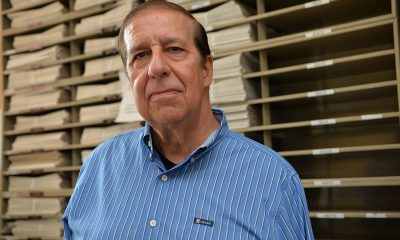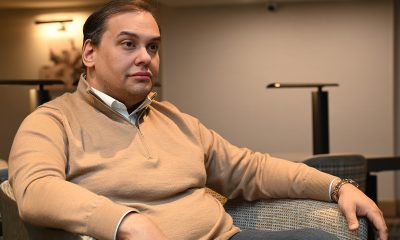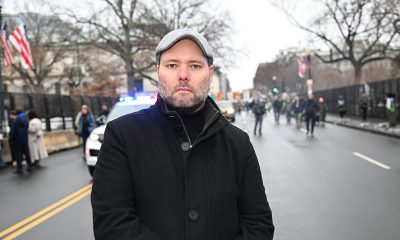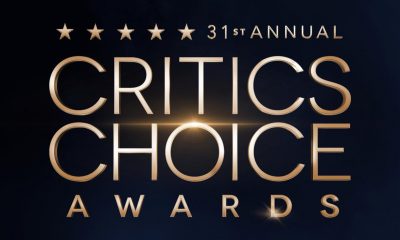a&e features
Gay identity elusive for Little Richard and Roy of Siegfried & Roy
Rock pioneer later said he was ‘ex-gay’; Vegas tiger king evaded topic almost entirely
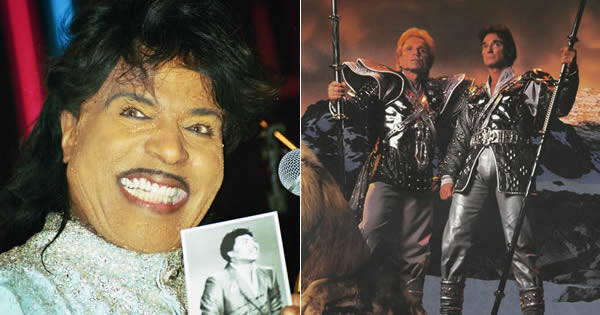
It was perhaps ironic that Little Richard and Roy Horn (of Siegfried & Roy) died within hours of each other this month. Though they were from totally separate pop culture factions, seeing their obits side by side in some outlets, such as the May 10 New York Times, was a sobering reminder of how an older generation of gay men — Horn, who died at 75 was on the outer cusp of the Boomers; Richard was 12 years older — dealt with (or didn’t deal with) their sexuality in a pre-Stonewall era when practically nobody was officially out but demeanor, style, stage persona and more “read” gay to middle America the same way sexual innuendo was implied in early jazz and movies long before it was discussed or depicted openly.
Little Richard (Richard Wayne Penniman was his legal name) was known for a string of ’50s hits like “Tutti Frutti” and “Long Tall Sally” whose impact went far beyond their initial chart peaks. Richard has been widely lauded as a rock and roll innovator and the first pop star to integrate black and white audiences in a time of rigid segregation in music and society. He died May 9 from bone cancer at his home in Tullahoma, Tenn., after a two-month illness. He was 87.
Horn came to fame with his nearly life-long professional (and for a time personal) partner Siegfried Fischbacher, who were known for their flashy Las Vegas act in which they made lions and tigers (and each other) vanish and reappear. They came to Vegas in 1967 and had a sellout run at the Mirage Resort and Casino from 1990-2003 that found them performing 500 shows yearly. By 1999, the show had grossed half a billion dollars and they were Vegas’s highest-paid entertainers.
Sadly, their careers ended abruptly on Oct. 3, 2003 (Horn’s birthday) when one of the tigers attacked Horn resulting in serious injury. Suffering a stroke and partial paralysis on his left side, Horn was eventually able to walk with assistance but never performed again. The duo made one final public appearance in 2009 with a tiger at a benefit for the Lou Ruvo Center for Brain Health in Las Vegas, the Times reported, before retiring officially in 2010. Horn died of COVID-19.
The duo (both German immigrants) only officially came out in 2007 in a National Enquirer article that announced “We’re gay” on the cover. They gave few interviews (even in their heyday) and could be testy about it when pressed.
Behind the glitz
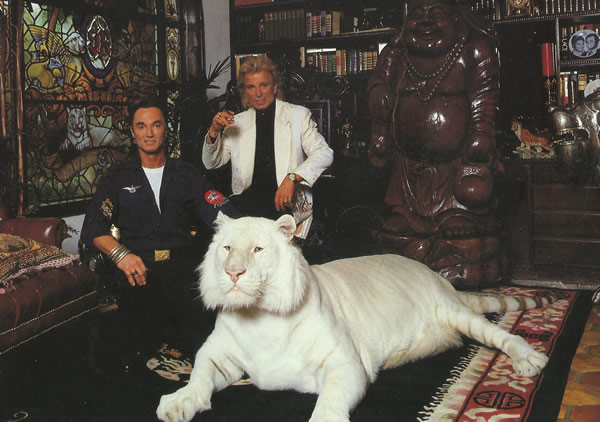
But with their over-the-top costumes (including Roy’s trademark codpiece), ostentatious Vegas home and inseparable public image (and never a hint that either might be involved romantically with anyone else), they didn’t have to state it explicitly. They donned capes and silver space suits, battled a sorceress and a fire-breathing dragon amidst smoke machines, lasers and, of course, lions and tigers, many of which were white, which are uber rare. Their act had a Liberace-esque flair to it, even if neither were ever quite that fey. Siegfried was the magician; Roy the animal trainer. They presented a yin/yang-type persona and lived together at Jungle Palace, an eight-acre Vegas estate (a much larger ranch was just outside the city proper) with, as of 1999, 55 tigers and 16 lions. Horn was the “Tiger King” decades before anybody heard of Joe Exotic (also gay) of the hit Netflix series.
“So you go deeper and say what is going on in my bedroom and in Roy’s bedroom,” Fischbacher said in a 1999 Vanity Fair profile. “I don’t care, I don’t know. I tell you this because this is me and I wouldn’t ask what you do with your dick either.”
Both said they were “very honored” to be considered gay icons but spoke of gay as “other.”
“I have a lot of friends who are gay and I made a lot of friends in show business and I found out that they are always interesting, intelligent and good people and fun to be with,” Fischbacher told Vanity Fair.
“I am flattered to think that people think that I am versatile,” Horn said. “You don’t have to define everything and I don’t want to disillusion people because I’m not a guy who kisses and tells.”
Pal Shirley MacLaine told the magazine they “used to be lovers a long time ago, yeah? In this day and age, who cares?”
Mainstream media only coyly touched on Horn’s sexuality. The Times said Fischbacher and Horn “were domestic as well as professional partners” but left it at that. Journalist Steve Friess, who in The Advocate called them “the world’s most openly closeted celebrities,” said a Mirage spokesperson told him the night of Horn’s attack that “it’s well known that they were lovers at one time.”
They were said to have little presence in Vegas gay life, according to Friess and others, and outside of buying an ad in a program book for an AIDS fundraiser, were not known to have used any of their vast wealth to support LGBTQ rights.
For some, that’s not a problem.
Milt Larsen, founder of The Magic Castle, a private club for magicians and enthusiasts in Hollywood, is 89, straight and knew Siegfried and Roy for many years, initially through his late sister-in-law, Irene Larsen. She and her husband Bill Larsen (Milt’s brother) loved magic and animals and discovered Siegfried & Roy in their early years in Vegas. Larsen later met the duo through his brother and sister-in-law and says Horn was “a dear, great friend.”
“Before Siegfried & Roy, magicians were very seldom anything other than an opening act,” Larsen says. “They came along and went from being an opening act to the headliner with their own huge show because it was so popular. … They were the best.”
Larsen’s friend Dale Hindman also know Siegfried & Roy and says he was at their house several times. He says Roy “fought like crazy” to recover and “they had the best medical people” working with him. He did daily physical therapy, swam and would zip around the grounds on a scooter. He recalls one Vegas convention in which Horn made a rare, post-accident appearance and walked to the podium.
“There wasn’t a dry eye in the house,” Hindman says. “I saw him a number of times at different places. He was in the scooter, he would talk, he loved people, he had great quality of life and they had the resources to have the best medical care. It’s such a shame that something like this virus came along and killed him.”
Larsen and Hindman say Horn’s sexuality was understood but “never really discussed.”
“I’ve been in show business a long time and sometimes it feels like just about everybody I’ve ever known was gay,” Larsen says with a laugh. “It was a different world then. I just don’t recall anybody ever talking much about it.”
Hindman says it was generational and gradual when more celebrities started coming out officially. Larsen says Fischbacher, especially (whom he calls a “great” businessman), just “never made a big point of it.”
“They were a couple in the sense that they were absolute partners in what they did and that their lives were their business,” he says. “People are people and in the world we live in today, it’s just not questioned as much.”
Larsen remembers “many, many times” being backstage in their Vegas dressing room post-show.
“The Champagne would be flowing and there were lots of wonderful friends,” Larsen says. “[Roy] was very, very gregarious and he and Irene really got to know each other and became wonderful friends.”
“There would be drinks and hors d’oeuvres and plenty of people,” Hindman says. “After awhile, Roy would go play with the animals. Siegfried would say, “I’m tired but you all stay as long as you want.’”
Out magician/actor Michael Carbonaro, 44, of reality show “The Carbonaro Effect,” said in a written comment to the Blade it didn’t matter if Siegfried & Roy were coy about their sexuality.
“I actually don’t know what Siegfried & Roy ever did or didn’t put into words,” he said. “I grew up seeing two gorgeous men living their magic dreams in bedazzled outfits, so they were always an iconic form of queer inspiration.”
It’s complicated
Others, however, aren’t willing to let them off the gay hook so easily. It’s unfair and unrealistic to expect everyone to have been a Frank Kameny or Barbara Gittings, but as time went on, many argue prominent gays should have done more for the cause.
Matthew Rettenmund, a gay blogger and pop culture historian/author, says Horn’s approach to being “out” reminds him of singer Barry Manilow who finally came out in 2017 at age 73 after decades of evading the question.
“They’re men who have convinced themselves that being gay in private is the same thing as being out,” he said in an e-mail. “Which is simply not true. I do hope that as the Rip Taylors and Richard Simmonses of the world leave us, as sad as it is to lose their talent, that they won’t be replaced by more of the same. Hiding in plain sight is still hiding and it still sends such a warped message of self-acceptance.”
Long-time gay Vegas resident/historian Dennis McBride says he can see where both sides of the issue were coming from.
“Siegfried and Roy were never involved in the Las Vegas queer community in any public way I’m aware of,” McBride wrote in an e-mail to the Blade. “They were much like Liberace in that respect — they were Las Vegas icons, counted Las Vegas as their personal and professional home, but deeply closeted because they came of age and established their careers during a time when they could have been jailed for being gay and lost those very lucrative careers. I remember there was some resentment in the community because we needed role models — particularly in the 1980s and early 1990s during the worst of the AIDS pandemic — and both Liberace and Sigfried & Roy might have been a great help in our struggle, brought credibility and support to our fight. I don’t think any of us entirely blamed them, though, because we were all in danger then ourselves as queer people.”
And while Richard stated he was gay explicitly on multiple occasions, he was never at peace with it and at multiple times in his career recorded gospel music and even for a time sold Bibles in a repudiation of the rock and roll and gay “devil’s” music and “lifestyle.” For him, being gay was a vexation and something to be overcome, which is, to some, even more troubling than Horn’s avoiding the issue.
“The problem is his religiosity and self doubt forced him back in the closet just as many times, “Rettenmund wrote. “And though he camped it up to earn a living in his final decades, it was homophobia that won. He died an ‘ex-gay,’ a sad loss.”
Richard was married to a woman from 1957-1964. They had one adopted son. As recently as 2017, he was condemning gay sex. “God, Jesus, he made men, men, he made women, women, you know? And you’ve got to live the way God wants you to live,” Richard told the Three Angels Broadcasting Network, a religious channel, reported by The Advocate.
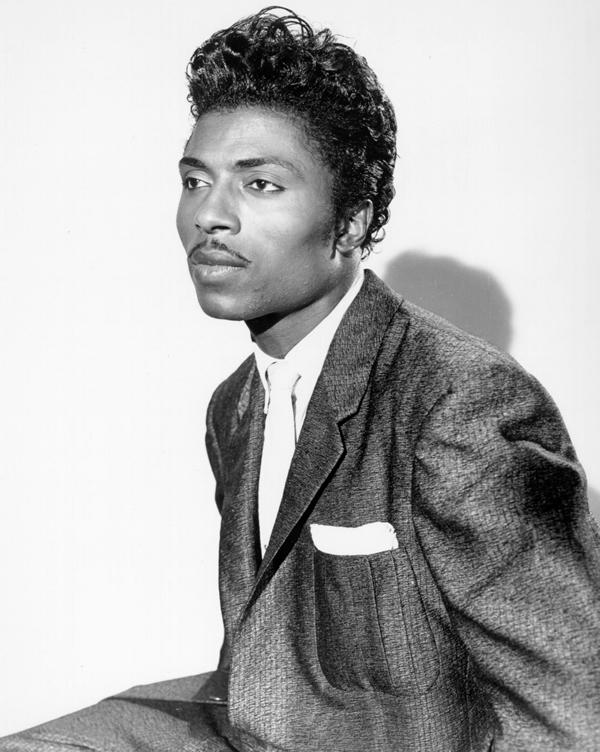
Gay author/actor Michael Kearns (who’s been on “Cheers,” “Murder, She Wrote,” “The Waltons,” “Knots Landing” et. al. and has said in interviews and books he had sex with Rock Hudson and Barry Manilow) says Richard deserves a more compassionate assessment.
“I don’t know how much gay sex he was having, but for me it was all about him having such a gay persona,” Kearns says. “I think what young men like me found so stirring and exciting is that it gave us something to grasp onto. Here was this sissy, this exciting, flamboyant, theatrical, wild persona and yeah, he later had the doubts and went back into the closet as a religious fanatic, well, of course he did. He was a black man from the South dealing with all that church stuff. I mean that’s a big struggle and I think people just don’t give him enough human credit for battling that publicly.”
McBride says after their performing years, Sigfried & Roy were occasioally seen in Vegas’s gay spots. They separated romantically in 1996, he says, when Fischbacher got his own house in Spanish Trails. In more recent years, after Horn’s accident, speaking out for gay causes wouldn’t have carried as much weight, he says.
“No one really cared by then,” McBride says. “The moment when their honesty mght have made a positive difference to the Las Vegas queer community had long passed and so had the careers they might have lost if they’d come out earlier.”
He says they were “largely circumspect” but “we still saw them discreetly out and about.”
“Even before (they broke up), when we saw them in the community, it was usually separately,” he says. “The two of them would visit the Le Cafe nightclub in the 1970s which then stood on the northwest corner of Tropicana Avenue and Paradise Road. The club’s lesbian owner, Marge Jacques, counted them as friends. In the 1980s, separately or together, they’d come to Gipsy, which then was an upscale dance club on Paradise Road and Naples Drive.”
They were also spotted occasionally at seedier gay spots, McBride says.
“Roy seemed to enjoy the Talk of the Town adult bookstore when it was in the Crestwood Shopping Center on East Charleston Boulevard and one or the other was occasionally seen at the Camp David bath house on Industrial Road,” he says. “But mostly, they and their circle of gay friends — which included Liberace and Hans Klok, who came out about the same time Sigfried & Roy did in 2007, and their protege, Darren Romeo, who just came out during his run in Pigeon Forge, Tenn., — kept themselves pretty much sequestered at Little Bavaria back in the day. I think the idea of a queer community was alien to them, outside their experience, maybe even distracting and a bit threatening.”
Religious hangups
Gospel music producer/historian Anthony Heilbut has written at length about how black Christian denominations have shamed or welcomed queer musicians to varying degrees in the ‘50s, ‘60s and prior. He knew Little Richard — not well, but they’d met on several occasions — and says one must consider the era when deciding how much blame to assign him. He wanders into another room of his New York apartment during a phone interview last week and puts on a recording of gospel singer Marion Williams (1927-1994), who for a time was in The Famous Ward Singers, helmed by Clara Ward (one of Aretha Franklin’s major influences) and who also had a significant solo career. He holds the phone up to a recording of her whooping and hollering and it’s easy to see where Little Richard got some of his inspiration. Richard appeared at the Kennedy Center Honors when Williams was inducted.
“His phrasings and his timbre and even his ballad singing, and he was a great ballad singer although we typically think of him as this sort of rock and roll clown, all that came from Marion Williams,” Heilbut, who’s gay, says. “You can’t copyright phrasings. That’s what singers could take from each other.”
Heilbut also says Richard, whom he first met in 1961 and says he’s “one of the very few people who ever saw him sing on a gospel program,” says Richard’s gospel singing career was never terribly convincing or memorable partially because he came from a staid denomination (Seventh Day Adventist, not nearly as musically rowdy as black Baptists and those in the Sanctified Church) and the fact that it was performed more dutifully than his rock and roll material.
“He was singing, ‘I quit show business and I wanna go straight/I wanna serve the Lord before it’s too late,’” Heilbut says. “His singing was very bland. There was more of the real gospel drama in his R&B and rock music.”
Heilbut also says Richard admired Williams in the traditional way gay men have worshiped show-stopping divas. He remembers seeing Richard at a Nashville studio when Heilbut was producing one of Williams’ later recordings. He mimics Richard’s speech patterns, recalling the conversation: “‘Is she still fabulous? Do she still make notes? I makes notes. I heard she preaching. I preaching too. … She always war my heart, she know, she know. I’ve been singing like her down through the years. Mahalia good, but Marion always were my singer.’”
Heilbut also says Richard’s various stints in gospel music robbed his career of momentum in rock. As respected as he was among rock pioneers, he’s almost wholly associated with his ‘50s heyday. Attempts at secular music comebacks in the ‘60s and ‘70s could not come close to matching his peak period.
“He made some very lovely records later and he could be a wonderful singer, but by then the audience had changed,” Heilbut says. “The train had passed.”
Later in life, Heilbut says, Richard was seen socializing in gay bars. He never personally saw him but says friends reported him being “the belle of the ball” at St. Louis gay bars on various occasions.
Richard, whom Heilbut says “always struck me as very goofy,” was ultimately “just incredibly confused.”
Roy, Richard ‘lacked courage’
Gay activist/entrepreneur Mitchell Gold, who like Siegfried & Roy, knows something about being linked for life to a former partner — he and business partner/former domestic partner Bob Williams formed their eponymous furniture company Mitchell Gold+Bob Williams in 1989, which they continue to run jointly. He says celebrities holding onto or returning to the closet are a reminder of “how horrible these religious teachings are, how toxic.”
“I don’t even know what it’s like to live like that,” Gold says. “I was tortured about it until I was 24, 25 but then that was the end of it. These guys who live their whole lives having to be careful about that they said, it’s just horrible. I don’t know as much about Siegfried & Roy except that after awhile it just gets to be ridiculous, like the Barry Manilow thing was for so many years.”
Gold understands Richard not being out in the ‘50s or Siegfried & Roy at the advent of their careers but later in life, once they were financially secure, he says they “lacked courage.”
“I never cared if we lost money for being out,” Gold says. “I don’t have to be a gazillionnaire. If I make less, I make less and it’s the same for Siegfried & Roy. At some point they had plenty of money and so why wouldn’t they speak out for people who aren’t being sheltered the way they are and are forced to live a closeted, unhealthy life. The only thing I can say is I don’t think these folks even know what a healthy life looks like.”
Gay journalist/author Michael Musto agrees.
“It’s partly generational, though many of their generation ended up being belatedly but wonderfully out and proud — Richard Chamberlain, Joel Grey, etc.,” he wrote in an e-mail. “It’s more of a sort of self-loathing-tinged caution based on a lifelong fear of an image adjustment or career damage. Roy played to Middle American high rollers, but obviously didn’t want to gamble on his own career. One of his magic tricks was being cagey about his sexuality.”
Musto says the music business has been especially troubling for non-straight black entertainers.
“Little Richard renounced his queerness when he should have just been at peace with it and allowed himself to celebrate and be celebrated by our community,” Musto says. “Luther Vandross, Whitney Houston and many others were unwilling to step out of the shadows because the people around them (and sometimes their own inner voices) told them not to. Little Richard was so queer that it seems like a ‘duh’ that he should have just gone there. But with Adam Lambert, Sam Smith and many others (and Elton John, Melissa Etheridge and k.d. lang having led the way), things have inalterably changed.”
Although Fischbacher and Horn never spoke of their religious influences — their decor reflected influences of Eastern religion and Horn would sound a large gong in his bedroom to let the tigers know he was awake — for Richard, Kearns says, it was tragic.
“I’m not saying there aren’t some fabulously evolved people who are religious but we’ve seen time and time again how religion gets its hold on gay people at a very early age and just does not let go and the result can be horrific,” Kearns says. “Richard is a fascinating creature to me. In a way, it’s amazing he lived as long as he did with this struggle. He deserves a lot of credit. He didn’t have an easy time of it.”
a&e features
Queer highlights of the 2026 Critics Choice Awards: Aunt Gladys, that ‘Heated Rivalry’ shoutout and more
Amy Madigan’s win in the supporting actress category puts her in serious contention to win the Oscar for ‘Weapons’

From Chelsea Handler shouting out Heated Rivalry in her opening monologue to Amy Madigan proving that horror performances can (and should) be taken seriously, the Critics Choice Awards provided plenty of iconic moments for queer movie fans to celebrate on the long road to Oscar night.
Handler kicked off the ceremony by recapping the biggest moments in pop culture last year, from Wicked: For Good to Sinners. She also made room to joke about the surprise hit TV sensation on everyone’s minds: “Shoutout to Heated Rivalry. Everyone loves it! Gay men love it, women love it, straight men who say they aren’t gay but work out at Equinox love it!”
The back-to-back wins for Jacob Elordi in Frankenstein and Amy Madigan in Weapons are notable, given the horror bias that awards voters typically have. Aunt Gladys instantly became a pop culture phenomenon within the LGBTQ+ community when Zach Cregger’s hit horror comedy released in August, but the thought that Madigan could be a serious awards contender for such a fun, out-there performance seemed improbable to most months ago. Now, considering the sheer amount of critics’ attention she’s received over the past month, there’s no denying she’s in the running for the Oscar.
“I really wasn’t expecting all of this because I thought people would like the movie, and I thought people would dig Gladys, but you love Gladys! I mean, it’s crazy,” Madigan said during her acceptance speech. “I get [sent] makeup tutorials and paintings. I even got one weird thing about how she’s a sex icon also, which I didn’t go too deep into that one.”
Over on the TV side, Rhea Seehorn won in the incredibly competitive best actress in a drama series category for her acclaimed performance as Carol in Pluribus, beating out the likes of Emmy winner Britt Lower for Severance, Carrie Coon for The White Lotus, and Bella Ramsey for The Last of Us. Pluribus, which was created by Breaking Bad’s showrunner Vince Gilligan, has been celebrated by audiences for its rich exploration of queer trauma and conversion therapy.
Jean Smart was Hack’s only win of the night, as Hannah Einbinder couldn’t repeat her Emmy victory in the supporting actress in a comedy series category against Janelle James, who nabbed a trophy for Abbott Elementary. Hacks lost the best comedy series award to The Studio, as it did at the Emmys in September. And in the limited series category, Erin Doherty repeated her Emmy success in supporting actress, joining in yet another Adolescence awards sweep.
As Oscar fans speculate on what these Critics Choice wins mean for future ceremonies, we have next week’s Golden Globes ceremony to look forward to on Jan. 11.
a&e features
Looking back at the 10 biggest A&E stories of 2025
‘Wicked,’ Lady Gaga’s new era, ‘Sexy’ Bailey and more

Although 2025 was a year marked by countless attacks on trans rights and political setbacks, the year also saw brilliant queer artists continuing to create art. From Cannes and Sundance Award winners now vying for Oscar consideration to pop icons entering new stages of their careers, queer people persevered to tell their stories through different media.
With the state of the world so uncertain, perhaps there’s no more vital time to celebrate our wins, as seen through some of this year’s top pop culture moments. While there’s no collection of 10 stories that fully encompass “the most important” news, here are some events that got the gays going:
10. ‘Mysterious Gaze of the Flamingo’ wins big at Cannes

The Cannes Film Festival has become a crucial start for films hoping to make their way to the Oscars, and first-time director Diego Céspedes won the top Un Certain Regard prize for his intimate western “The Mysterious Gaze of the Flamingo.” The film is set in the ‘80s and is intended as an allegory for the AIDS epidemic. Seeing a film that unpacks vital queer history win one of the most coveted awards at Cannes has been a huge point of pride in the independent filmmaking community.
Since the film bowed at Cannes, it has been selected as Chile’s Oscar entry in the Best International Feature race. Speaking with The Blade during the film’s AFI Fest run in October, Céspedes said: At first, I was kind of scared to have this campaign position in the times that we’re living [in] here. But at the same time, I think the Oscars mean a huge platform — a huge platform for art and politics.”
9. ‘The Last of Us’ returns for an even gayer season 2
While the first season of The Last of Us gave us one of TV’s most heartbreaking queer love stories in the episode “Long, Long Time,” Season 2 doubled down on its commitment to queer storytelling with the blossoming relationship between Ellie (Bella Ramsey) and Dina (Isabela Merced). The show expanded on the pair’s relationship in the original video game, making it perhaps the central dynamic to the entire season. That unfortunately came with more homophobic backlash on the internet, but those who checked out all the episodes saw a tender relationship form amid the show’s post-apocalyptic, often violent backdrop. For their performance, Ramsey was once again nominated for an Emmy, but Merced deserved just as much awards attention.
8. ‘Emilia Pérez’ sparks controversy
Jacques Audiard’s genre-bending trans musical “Emilia Pérez” proved to be an awards season juggernaut this time last year, winning the Golden Globe for Best Musical/Comedy. But when the lead star Karla Sofia Gascón’s racist, sexist, and homophobic old tweets resurfaced, the film’s Oscar campaign became a tough sell, especially after Netflix had tried so hard to sell Emilia Pérez as the “progressive” film to vote for. Mind you, the film had already received significant backlash from LGBTQ+ audiences and the Mexican community for its stereotypical and reductive portrayals, but the Gascón controversy made what was originally just social media backlash impossible to ignore. The only person who seemed to come out of the whole debacle unscathed was Zoe Saldaña, who won the Oscar for Best Supporting Actress over Ariana Grande.
7. ‘Sorry, Baby’ establishes Eva Victor as major talent
Back in January at the Sundance Film Festival, Eva Victor (known by many for her brand of sketch comedy) premiered their directorial debut “Sorry, Baby” to rave reviews, even winning the Waldo Salt Screening Award. Victor shadowed Jane Schoenbrun on the set of “I Saw the TV Glow,” and seeing Victor come into their own and establish such a strong voice immediately made them one of independent cinema’s most exciting new voices. A memorable scene in the film sees the main character, Agnes (played by Victor), struggling to check a box for male or female, just one example of how naturally queerness is woven into the fabric of the story.
Most recently, Victor was nominated for a Golden Globe for her performance in the film, and she’s represented in a category alongside Jennifer Lawrence (“Die My Love”), Jessie Buckley (“Hamnet”), Julia Roberts (“After the Hunt”), Renate Reinsve (“Sentimental Value”) and Tessa Thompson (“Hedda”). The film also received four Independent Spirit Award nominations overall.
6. Paul Reubens comes out in posthumous doc

While Paul Reubens never publicly came out as gay before passing away in 2023, the two-part documentary “Pee-wee as Himself” premiered back in May on HBO Max, giving the legendary comedian a chance to posthumously open up to the world. Directed by Matt Wolf, the documentary explores how Reubens found his alter ego Pee-Wee Herman and why he kept his private life private.
The documentary won an Emmy in the Outstanding Documentary or Nonfiction Special category and remains one of the most critically acclaimed titles of the year with a 100% Rotten Tomatoes score. Also worth noting, the National Geographic documentary Sally told the posthumous coming out story of Sally Ride through the help of her long-time partner, Tam O’Shaughnessy.
5. Lady Gaga releases ‘Mayhem’
Lady Gaga entered a new phase of her musical career with the release of Mayhem, her seventh album to date. From the frenzy-inducing pop hit Abracadabra to the memorable Bruno Mars duet featured on “Die With a Smile,” seeing Gaga return to her roots and make an album for the most die-hard of fans was especially rewarding after the underwhelming film releases of “House of Gucci” and “Joker: Folie à Deux.” Gaga has been touring with The Mayhem Ball since July, her first arena tour since 2018. She even extended her tour into 2026 with more North American dates, so the party isn’t stopping anytime soon. And Gaga is even set to make an appearance next May in “The Devil Wears Prada 2.”
4. Cynthia Erivo, Ariana Grande perform at the Oscars

While “Wicked: For Good” didn’t quite reach the heights of the first film, we will forever have Cynthia Erivo and Ariana Grande’s breathtaking live performance that opened the 97th Academy Awards. The pair sang a rendition of “Over the Rainbow,” “Home,” and “Defying Gravity,” paying proper homage to the original 1939 “Wizard of Oz.” Even non-Wicked fans can’t deny how magical and brilliantly staged this performance was. With both Erivo and Grande up for acting Oscars last year, they’re hoping to repeat success and make history with consecutive nominations. Either way, let’s hope there’s another live performance in the making, especially with two new original songs (The Girl in the Bubble and No Place Like Home) in the mix.
3. Indya Moore speaks out against Ryan Murphy
Indya Moore has consistently used social media as a platform for activism, and in September, posted a 30-minute Instagram live speaking out against “Pose” co-creator Ryan Murphy. Moore claimed that Murphy wasn’t being a true activist for trans people. “Ryan Murphy, we need you to do more. You need to address the racism, the violence, and the targeting of people on your productions, Ryan Murphy. You do need to make sure trans people are paid equally. Yes, Janet did the right thing,” Moore said. Murphy was also back in the headlines this year for the critically panned “All’s Fair” and the controversial “Monster: The Ed Gein Story” starring Laurie Metcalf and Charlie Hunnam.
2. Cole Escola wins Tony for Best Leading Actor
Few pop culture moments this year brought us together more than Cole Escola winning a Tony award for “Oh, Mary!” the Broadway show they created, wrote and starred in (we love a triple threat!) Escola made history by becoming the first nonbinary person to win a Tony in the leading actor category, and seeing them excitedly rush to the stage wearing a Bernadette Peters-inspired gown instantly became a viral social media moment.
The cherry on top of Escola’s major moment is the recent news that they are writing a Miss Piggy movie with Jennifer Lawrence and Emma Stone producing — news that also broke the internet for the better. We cannot wait!
1. Jonathan Bailey makes gay history as ‘Sexiest Man Alive’

The same year as his on-screen roles in blockbusters “Jurassic World Rebirth” and “Wicked: For Good,” Jonathan Bailey made history as the first openly gay man to be named People magazine’s “Sexiest Man Alive.” The fact that it took 40 years for an openly gay man to earn the title is a signifier of how far we still have to go with queer representation, and seeing Bailey celebrated is just one small step in the right direction.
“There’s so many people that want to do brilliant stuff who feel like they can’t,” he told PEOPLE, “and I know the LGBT sector is under immense threat at the moment. So it’s been amazing to meet people who have the expertise and see potential that I could have only dreamed of.” In 2024, Bailey founded the charity titled The Shameless Fund, which raises money for LGBTQ+ organizations.
a&e features
Your guide to D.C.’s queer New Year’s Eve parties
Ring in 2026 with drag, leather, Champagne, and more
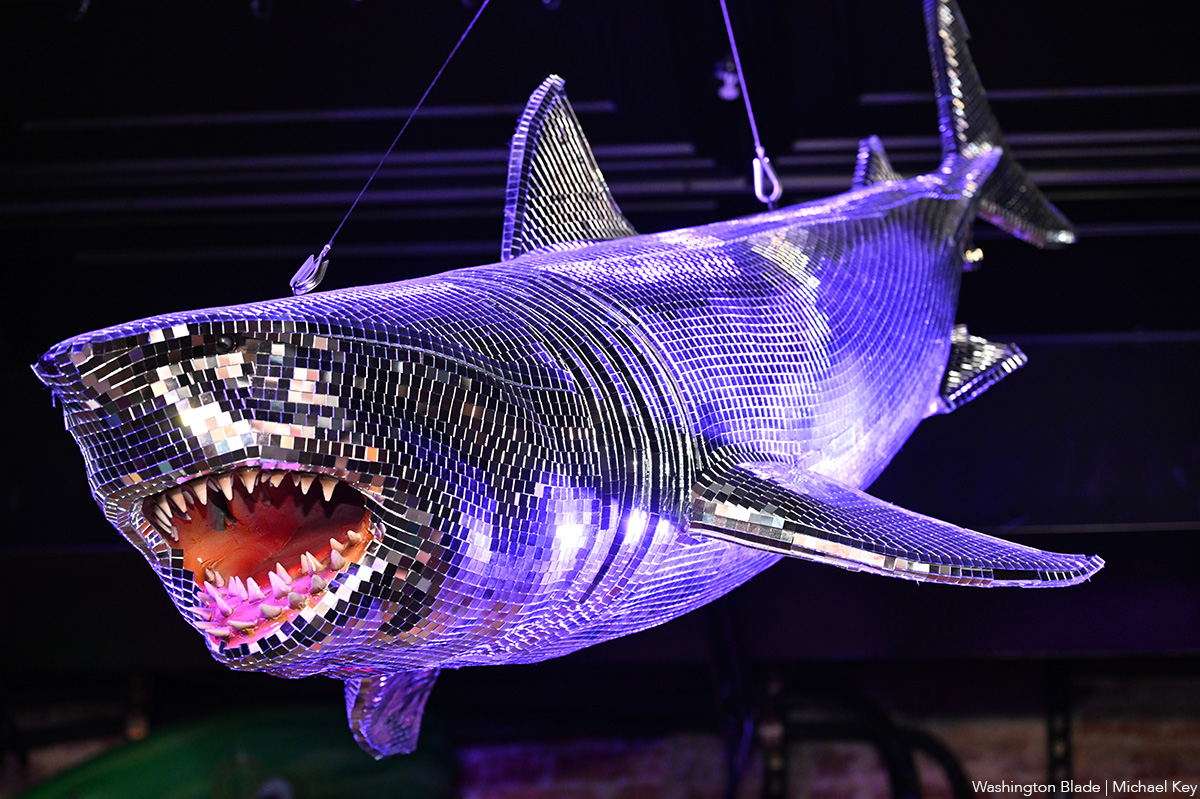
With Christmas in the rear view mirror, we can turn our attention to ringing in a much-anticipated New Year with a slew of local LGBTQ parties. Here’s what’s on tap.
Pitchers
This spacious Adams Morgan bar is hosting the “Pitchers’ Perfect New Year’s Eve.” There will be a midnight Champagne toast, the ball drop on the big screens, and no cover, all night long. The bar doesn’t close until 4 a.m., and the kitchen will be open late (though not until close). All five floors will be open for the party, and party favors are promised.
Trade
D.C.’s hottest bar/club combo is leaning into the Shark motif with its NYE party, “Feeding Frenzy.” The party is a “glitterati-infused Naughty-cal New Year’s Even in the Shark Tank, where the boats are churning and the sharks are circling.” Trade also boasts no cover charge, with doors opening at 5 p.m. and the aforementioned Shark Tank opening at 9 p.m.. Four DJs will be spread across the two spaces; midnight hostess is played by Vagenesis and the two sea sirens sensuously calling are Anathema and Justin Williams.
Number Nine
While Trade will have two DJs as part of one party, Number Nine will host two separate parties, one on each floor. The first floor is classic Number Nine, a more casual-style event with the countdown on TVs and a Champagne midnight toast. There will be no cover and doors open at 5 p.m. Upstairs will be hosted by Capital Sapphics for its second annual NYE gathering. Tickets (about $50) include a midnight Champagne toast, curated drink menu, sapphic DJ set by Rijak, and tarot readings by Yooji.
Crush
Crush will kick off NYE with a free drag bingo at 8 p.m. for the early birds. Post-bingo, there will be a cover for the rest of the evening, featuring two DJs. The cover ($20 limited pre-sale that includes line skip until 11 p.m.; $25 at the door after 9 p.m.) includes one free N/A or Crush, a Champagne toast, and party favors (“the legal kind”). More details on Eventbrite.
Bunker
This subterranean lair is hosting a NYE party entitled “Frosted & Fur: Aspen After Dark New Year’s Eve Celebration.” Arriety from Rupaul Season 15 is set to host, with International DJ Alex Lo. Doors open at 9 p.m. and close at 3 p.m.; there is a midnight Champagne toast. Cover is $25, plus an optional $99 all-you-can-drink package.
District Eagle
This leather-focused bar is hosting “Bulge” for its NYE party. Each District Eagle floor will have its own music and vibe. Doors run from 7 p.m.-3 a.m. and cover is $15. There will be a Champagne toast at midnight, as well as drink specials during the event.
Kiki, Shakiki
Kiki and its new sister bar program Shakiki (in the old Shakers space) will have the same type of party on New Year’s Eve. Both bars open their doors at 5 p.m. and stay open until closing time. Both will offer a Champagne toast at midnight. At Kiki, DJ Vodkatrina will play; at Shakiki, it’ll be DJ Alex Love. Kiki keeps the party going on New Year’s Day, opening at 2 p.m., to celebrate Kiki’s fourth anniversary. There will be a drag show at 6 p.m. and an early 2000s dance party 4-8 p.m.
Spark
This bar and its new menu of alcoholic and twin N/A drinks will host a NYE party with music by DJ Emerald Fox. Given this menu, there will be a complimentary toast at midnight, guests can choose either sparkling wine with or without alcohol. No cover, but Spark is also offering optional wristbands at the door for $35 open bar 11 p.m.-1 a.m. (mid-shelf liquor & all NA drinks).
-

 Sponsored4 days ago
Sponsored4 days agoSafer Ways to Pay for Online Performances and Queer Events
-

 District of Columbia3 days ago
District of Columbia3 days agoTwo pioneering gay journalists to speak at Thursday event
-

 Colombia3 days ago
Colombia3 days agoBlade travels to Colombia after U.S. forces seize Maduro in Venezuela
-

 a&e features3 days ago
a&e features3 days agoQueer highlights of the 2026 Critics Choice Awards: Aunt Gladys, that ‘Heated Rivalry’ shoutout and more

